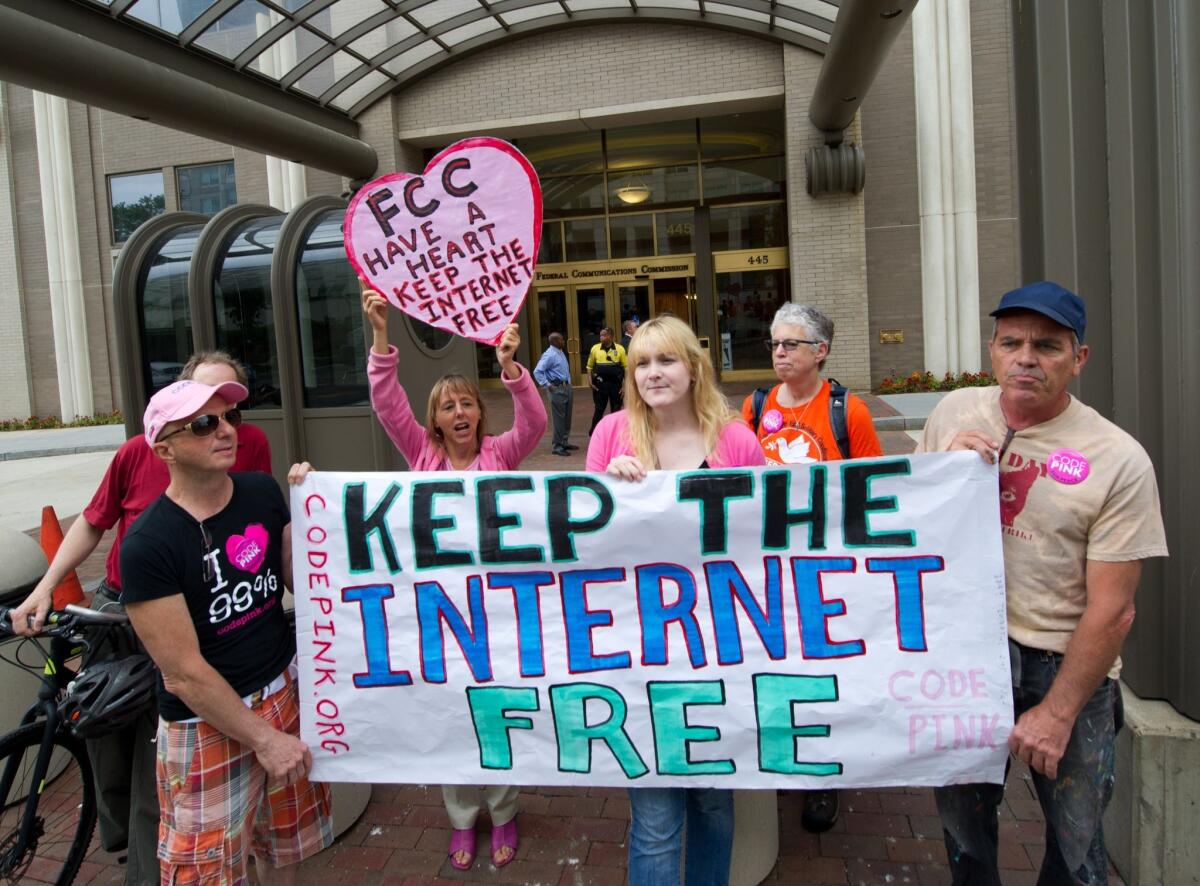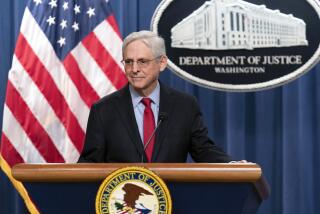Editorial: Keeping consumers, not ISPs, in control of the Internet

Protesters hold a rally to support “net neutrality” at the offices of the FCC in Washington, DC on May 15, 2014.
It’s safe to assume that none of the engineers who helped create the first large-scale network of computer networks for the Defense Advanced Research Projects Agency in the late 1960s would have predicted that their work would ultimately blossom into today’s global Internet. But then, no one back then could have forseen the Internet’s explosive growth — the way it’s spread into seemingly every aspect of daily life.
The driving force behind that growth has been a virtuous cycle of innovation. As more content and services became available online, more people signed up for Internet access, which drew more businesses online, which attracted more consumers. At the same time, increasingly rich content led consumers to demand faster connections from their Internet service providers, who responded by investing in higher-capacity transmission technologies. The increased capacity prompted websites to offer even richer content, such as streaming video, which led more people to sign up for broadband connections and encouraged ISPs to develop even fatter virtual pipes.
The FCC’s latest rules [seek] to preserve the openness and freedom to innovate that have characterized the Internet since its inception.
The cycle of innovation has spread ever outward, fueled by new devices (most notably Apple’s iPhone) and services that fed the public’s demand to be connected anywhere and everywhere, all the time. But one important aspect of the Internet changed over the years: The teeming ranks of ISPs offering dial-up service were replaced in the typical residential neighborhood by a broadband duopoly consisting of one cable operator selling cable modem service and one telephone company selling DSL. In much of Los Angeles, that means buying broadband either from Time Warner Cable or AT&T.
The Federal Communications Commission recognized a decade ago that the lack of competition in broadband could be a threat to the innovation that was the Internet’s lifeblood. The dominant ISP in a community could, for instance, decide to launch its own online movie service and block or degrade any other service that threatened it. Rather than easing online congestion by adding capacity, it could try to monetize the problem by offering websites a congestion-free path to their customers for a fee. In short, ISPs could put their thumbs on the scales of competition, deciding which sites, services, applications and connected devices would be able to build an audience — and which wouldn’t.
That’s why the commission has tried repeatedly since 2005 to protect what’s known as net neutrality — the principle that the ISPs connecting users to the Internet should treat the traffic on their networks evenhandedly. Unfortunately, the U.S. Court of Appeals for the District of Columbia Circuit has twice rejected the FCC’s methods. On Friday, the commission will be back before the D.C. Circuit a third time, defending the regulations it rewrote in response to the last ruling. The ISPs’ complaints have stayed the same throughout: The FCC’s rules improperly hinder them from offering innovative ways to connect their customers to content and services online, and were adopted without the necessary authority or procedures.
When it adopted its current rules earlier this year, however, the commission followed the path that the appeals court laid out in 2014 for setting strict rules that would pass muster. It reclassified ISPs that offer consumer broadband services as utilities subject to the law’s most stringent rules. It then exempted them from most of those strictures, leaving three clear prohibitions — against blocking, slowing down or charging fees to prioritize data — and a broad admonition not to “unreasonably” interfere with or disadvantage traffic to or from any source.
The D.C. Circuit’s 2014 ruling supports the FCC’s current approach in one other important way. According to the court, the FCC has established the need for neutrality rules by showing how ISPs had the incentive and ability to pick winners and losers online. Such interference would throw a potentially insurmountable hurdle in the path of the start-ups and innovators that have been essential not just to the burgeoning demand for broadband connections but the virtuous cycle of Internet growth.
The FCC’s latest rules may seem more cumbersome than its previous efforts, but they have the same goal: to preserve the openness and innovation that have characterized the Internet since its inception. And despite their complaints, ISPs have continued to offer new products and services — witness, for example, Verizon Wireless’ investment in unlicensed broadband and T-Mobile’s promotion of streaming video. Unless and until ISPs face the kind of robust competition they did in the dial-up days, the FCC is right to guard consumers and online businesses against Internet providers trying to use their market dominance to influence where people go and what they do online.
Follow the Opinion section on Twitter @latimesopinion and Facebook
More to Read
A cure for the common opinion
Get thought-provoking perspectives with our weekly newsletter.
You may occasionally receive promotional content from the Los Angeles Times.






